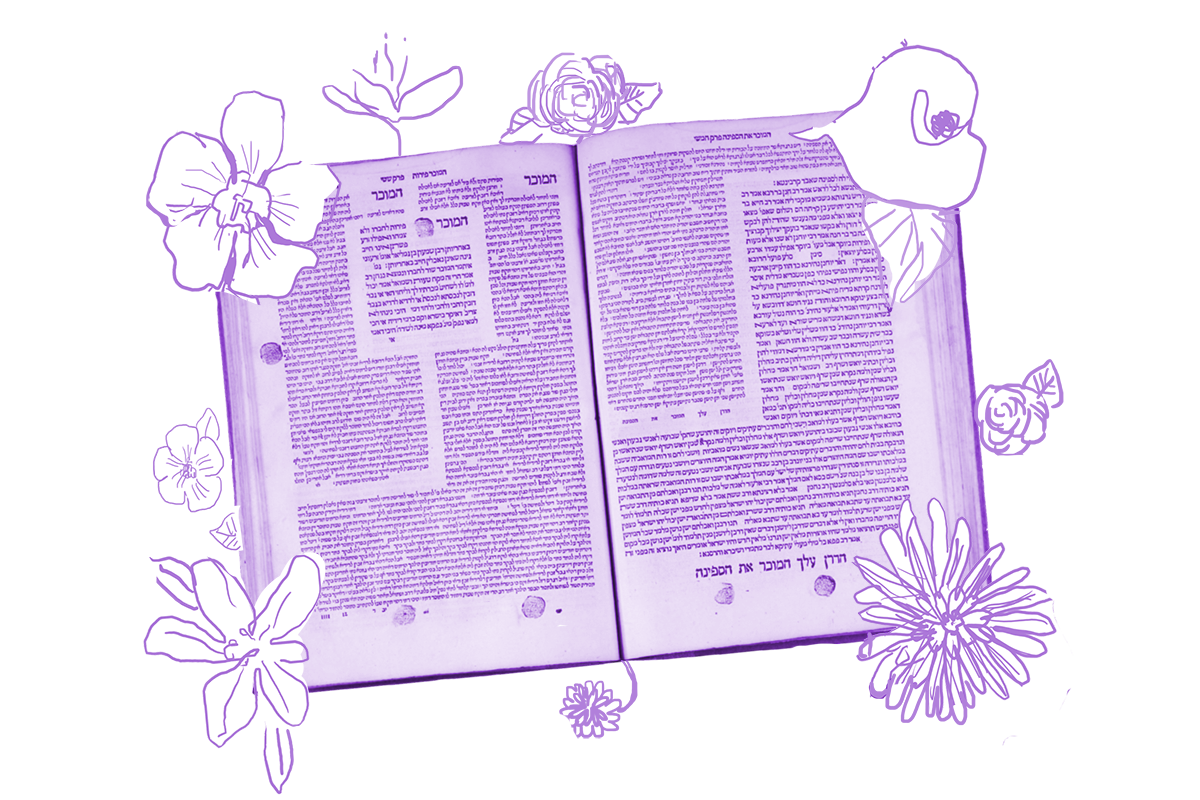For two days now, we’ve been discussing the Torah’s law that the paschal lamb must be roasted by fire. The rabbis take it very seriously. So seriously, in fact, that they forbid inserting a metal spit into the animal lest the metal heat up and cook the animal from the inside. Every bit of meat must be cooked by the flames alone.
On the bottom of yesterday’s page, we encountered a mishnah that addresses the concern that even an animal properly spitted on pomegranate wood (which does not conduct heat) might still accidentally come into contact with heat that doesn’t come directly from the flames. For instance, the animal might brush the side of the oven and cook from the heat of the bricks. Or some of the drippings might fall and be cooked by the hot floor and then splash back up on the animal.
It becomes apparent in the mishnah that any part of the paschal lamb not cooked by fire is forbidden. Those splashed drippings present a problem not just because they cooked incorrectly, but because they are now a forbidden substance on the lamb itself.
From here, both the mishnah and then the Gemara proceed to a discussion of what to do when a forbidden food accidentally mixes with a permissible food. And likewise, when meat accidentally mixes with milk. And what even constitutes mixing? When a lamb and a pig are roasted side-by-side, do the aromas of the pig enter the lamb and render it forbidden?
With your help, My Jewish Learning can provide endless opportunities for learning, connection and discovery.
Flavor transfers, as we learned some time ago, when a food is hot. Or when it is salty or marinated. Two cold foods don’t transfer flavor; two hot foods do. Much of the ambiguity centers on the mixture of hot and cold food. Rav maintains that it’s a problem when hot forbidden food is added to cold permitted food. Shmuel says the issue is when cold forbidden food is added to hot permitted food.
In the midst of all this, we encounter a surprising ruling:
A particular young bird that fell into a jug of kamka (a dairy food). Rav Hinnana, son of Rava of the city of Pashronya, permitted it.
Wait a minute! How could this possibly be OK? This is an entire animal (albeit a small one) falling into a dairy dish. It just seems wrong. The Gemara explains Rav Hinnana’s logic: the bird is raw (and therefore cold) and the kamka is salty, but not salty enough to cause flavor to transfer. All you need to do is fish the bird out, rinse it off, and you’re good to go.
We might expect pushback here. After all, we’ve seen that the rabbis abhor even the appearance of transgressing halakhah. This certainly looks like a blatant violation of kashrut. But the Gemara takes an opposite tact here:
Rava said: Who is wise enough to permit something as complicated as this, if not Rav Hinnana, son of Rava of Pashronya, as he is a great man?
Rava (the well-known Amora, not the father of Rav Hinnana who has the same name) praises Rav Hinnana for proving something profoundly counterintuitive. The Gemara loves this kind of display of brilliance. Famously, it was said that to qualify as a member of the Sanhedrin, a sage was required to construct a plausible argument that the carcass of a sheretz (a creeping animal) — something the Bible states explicitly is impure — is actually pure (Sanhedrin 17b). Being able to prove black is white, or impure is pure, serves as a kind of proof of mental and argumentative acuity. Is this what Rava is praising?
Or perhaps Rava is praising Rav Hinnana for finding a way to render the dish permissible, to reduce the burden on people so that they need not throw out otherwise edible food. Following Jewish law is difficult enough. Praise goes to those rabbis who don’t make it any harder than it needs to be.
Read all of Pesachim 76 on Sefaria.
This piece originally appeared in a My Jewish Learning Daf Yomi email newsletter sent on February 5th 2021. If you are interested in receiving the newsletter, sign up here.



